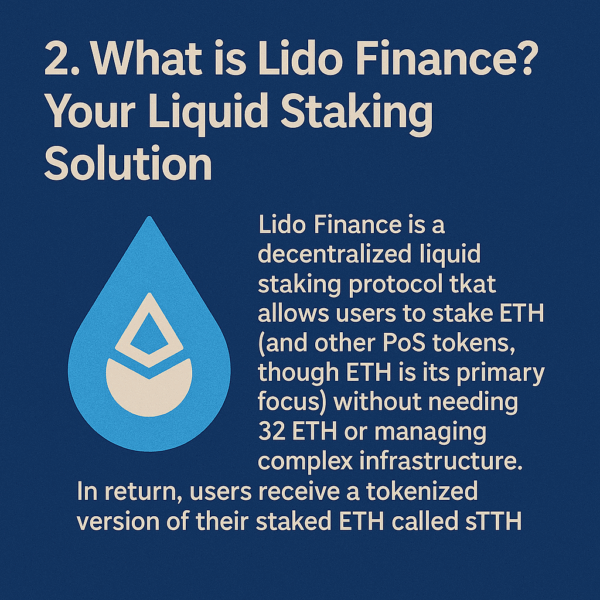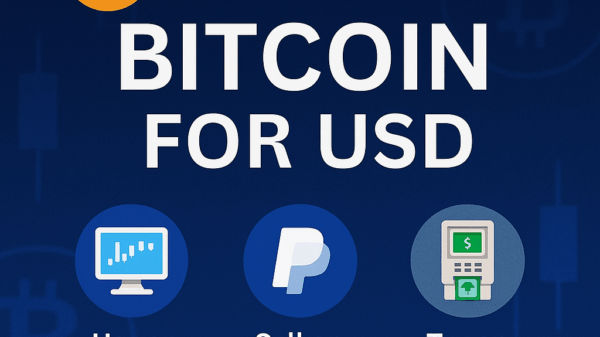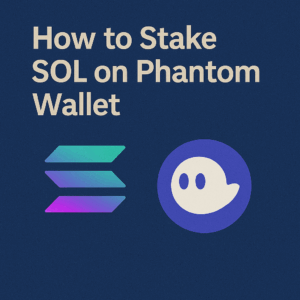How to Stake Ethereum Using Lido
By Jason Miller – Crypto Writer 10.expert 🧠 Covering Bitcoin, altcoins, blockchain & Web3.
As a crypto writer and analyst, I’ve seen firsthand how the Ethereum network has evolved, especially with its transition to Proof-of-Stake (PoS) and the highly anticipated Merge. This shift has opened up incredible opportunities for users to earn passive income through staking. However, the requirement of 32 ETH to run a solo validator node, combined with technical complexities, can be a barrier for many. This is where Lido steps in, offering a revolutionary “liquid staking” solution.
Lido makes staking Ethereum accessible to everyone, regardless of how much ETH they hold, while also providing liquidity. It’s a game-changer for those who want to earn staking rewards without locking up their assets or dealing with node operation.
How to Stake Ethereum Using Lido: Your Gateway to Liquid Staking 🚀💧
Let’s explore how Lido works and why it has become a dominant force in the Ethereum staking landscape.
1. The Ethereum Staking Dilemma: Why Lido Emerged 🤔
Before Lido, staking Ethereum required a minimum of 32 ETH and the technical know-how to run a validator node. This created a high barrier to entry and locked up users’ funds, making them illiquid. Lido was created to solve these problems, democratizing access to ETH staking.
2. What is Lido Finance? Your Liquid Staking Solution 🌟

Lido Finance is a decentralized liquid staking protocol that allows users to stake ETH (and other PoS tokens, though ETH is its primary focus) without needing 32 ETH or managing complex infrastructure. In return, users receive a tokenized version of their staked ETH called stETH.
3. The Magic of stETH: Your Liquid Staked Ether ✨
When you stake ETH with Lido, you receive stETH in return, usually at a 1:1 ratio. This stETH token represents your staked ETH plus any accumulated staking rewards. Crucially, stETH is “liquid” – it can be traded, lent, or used in various DeFi protocols, giving you liquidity while your underlying ETH remains staked.
4. How Lido Simplifies the Staking Process 🛠️
Lido simplifies staking by pooling users’ ETH and delegating it to a network of professional and audited node operators. This pooling mechanism allows users to stake any amount of ETH, as small as 0.00001 ETH, without having to run their own validator.
5. Connecting Your Wallet: The First Step 🔌
To begin, you’ll need a compatible Web3 wallet like MetaMask, Trust Wallet, or a hardware wallet integrated with a DApp browser (like Ledger Live). Navigate to the official Lido staking interface (stake.lido.fi) and connect your wallet.
6. Staking Your ETH: A Few Clicks Away 🖱️
Once your wallet is connected, you’ll see your ETH balance and the current staking APR (Annual Percentage Rate) offered by Lido. Simply enter the amount of ETH you wish to stake, review the transaction details (including estimated gas fees), and confirm the transaction in your wallet.
7. Receiving stETH: Instant Liquidity 🔄
Immediately after confirming the transaction, Lido’s smart contracts will mint and send stETH tokens to your connected wallet. Your stETH balance will automatically rebase daily to reflect the staking rewards you’re earning.
8. Understanding the APR and Fees 💲
Lido’s staking APR is dynamic and depends on network conditions and the total amount of ETH staked. Lido charges a small fee (typically 10%) on the staking rewards, which is split between node operators and the Lido DAO treasury. You receive 90% of the gross rewards.
9. The Lido DAO: Decentralized Governance 🏛️
Lido is governed by the Lido DAO (Decentralized Autonomous Organization). Holders of the LDO token can vote on important decisions regarding the protocol’s development, fees, and node operator selection, contributing to its decentralized nature.
10. Using Your stETH in DeFi: Unlock More Yield 🔓
The true power of liquid staking lies in using your stETH within the broader DeFi ecosystem. You can: * Provide liquidity on decentralized exchanges (DEXs) like Curve Finance. * Use stETH as collateral for borrowing on lending protocols like Aave or Compound. * Participate in yield farming strategies. This allows you to earn additional yield on top of your staking rewards.
11. Unstaking Your ETH: The Withdrawal Process ➡️
With the Ethereum network’s Shapella upgrade, unstaking ETH from Lido is now possible. You can initiate a withdrawal request through the Lido interface, and after a variable cooldown period (depending on network congestion and withdrawal queue length), your ETH will be returned to your wallet.
12. Risks to Consider: Smart Contracts, Peg, and Slashing ⚠️
While Lido significantly reduces complexity, it’s crucial to be aware of the inherent risks: * Smart Contract Vulnerability: Although Lido’s contracts are audited, any smart contract carries a theoretical risk of bugs or exploits. * stETH De-peg Risk: While stETH is designed to trade close to ETH, market forces can sometimes cause a temporary “de-peg” (stETH trading below ETH). * Slashing Risk: Although Lido diversifies across many reputable node operators to mitigate this, if a validator misbehaves, a portion of the staked ETH (and thus stETH) could be slashed.
13. Staying Safe: Official Channels and Research 🕵️♀️
Always interact only with the official Lido website (stake.lido.fi). Be wary of phishing attempts or fake websites. Do your own thorough research (DYOR) on Lido’s security audits and community reputation.
14. Monitoring Your Rewards and Wallet 👀
You can monitor your stETH balance directly in your connected wallet. Since stETH rebases daily, your balance will automatically update to reflect your accrued staking rewards. Some block explorers also allow you to track your stETH.
15. The Future of Staking with Lido 🗺️
Lido continues to evolve, aiming to enhance decentralization, integrate with more DeFi protocols, and explore liquid staking solutions for other blockchain networks. It remains a key player in making passive income generation in crypto accessible and efficient.
Staking Ethereum with Lido offers a compelling blend of passive income, liquidity, and accessibility, making it an attractive option for both seasoned crypto investors and newcomers alike. Just remember to always understand the risks before diving in!








